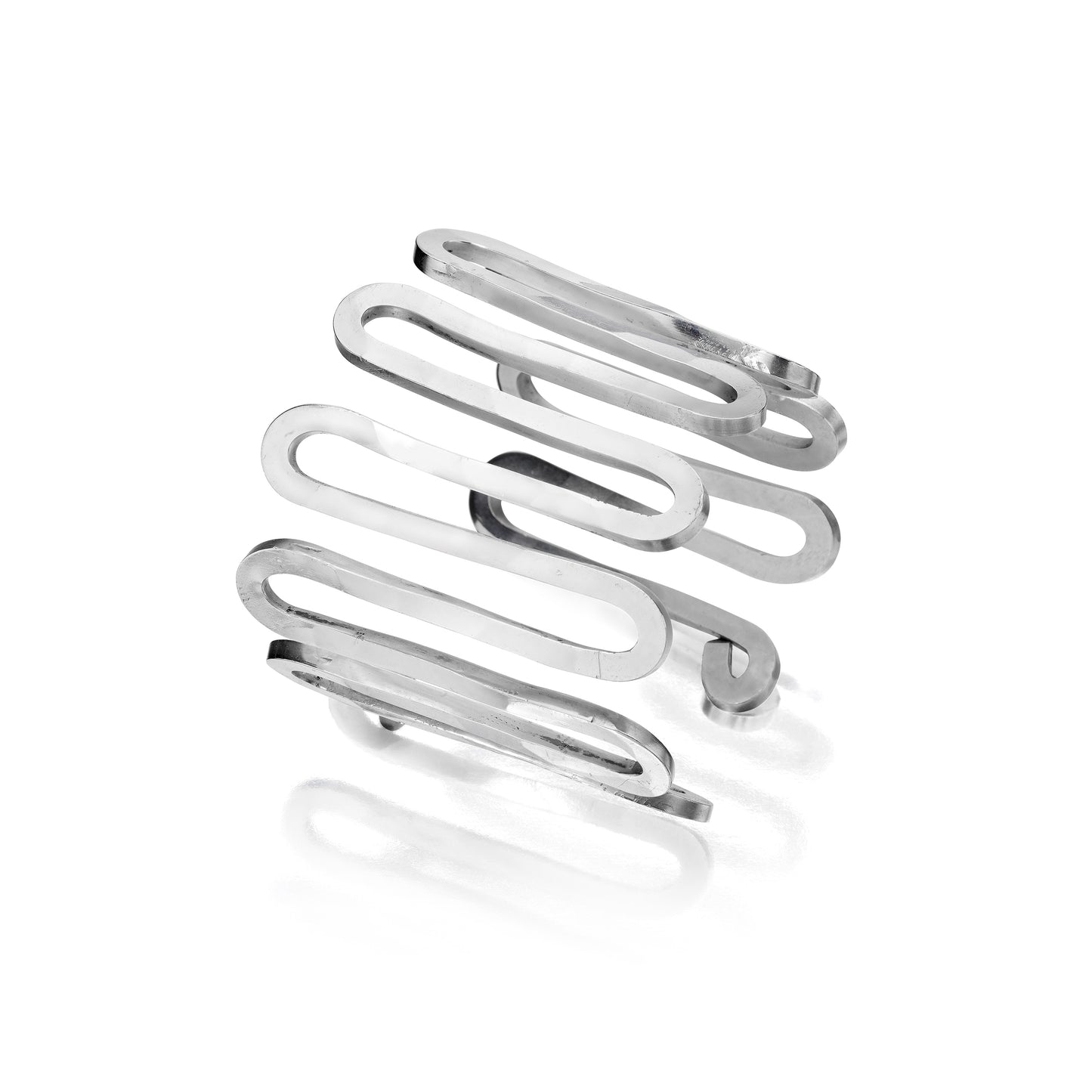SILVER BRACELET BY ALEXANDER CALDER, NEW YORK, CIRCA 1948
SILVER BRACELET BY ALEXANDER CALDER, NEW YORK, CIRCA 1948
SOLD
A bracelet composed of rectangular silver wire arranged in undulating curves to form a cuff
- Measurements: 2 3/8 × 2 1/2 inches
Additional cataloguing
Certification
- This work is registered in the archives of the Calder Foundation, New York, under number A14566.
Literature
- cf. Rower, Alexander S.C., ed. Calder Jewelry. New York: Calder Foundation, 2007, pp. 112, 115 & back endpapers.
Biography
Born into a family of artists in Pennsylvania in 1898, Alexander Calder eventually became one of the greatest American sculptors, known for a variety of genres including mobiles, brightly colored prints, and wire jewelry. Calder earned a degree in mechanical engineering before creating toys and the Cirque Calder in 1926. These artistic creations led to exhibitions of his wire sculptures. Throughout his life he created more than 1,800 fantastic pieces of jewelry by hand. He died in 1976.
Significance
Alexander Calder is best known for his delicately balanced mobiles and sculptures that move in response to air or touch, but jewelry was his most personal and constant medium. He began creating wire forms in 1902, at the age of 8, for his sister’s dolls, and later often gifted pieces to friends and collectors of his work. Each pieces was designed and handmade by the artist, a unique combination of his hammering and the design aesthetic and grace contained in his large-scale works. Calder’s jewelry, bohemian but refined, was collected by fashionable art collectors including Peggy Guggenheim, Mary Rockefeller, and Millicent Rogers. Chicago collector Muriel Kallis Steinberg Newman said of Calder jewelry in W magazine, “I was never particularly interested in precious jewels. I was always interested in the form and shape of things.”
This wire bangle was created by Calder around 1948 and gifted to a collector of his work, according to the Calder Foundation. Made of squared-cornered silver wire that has been hammered into undulating curves the cuff hugs the forearm in a piece that is both simple and beautiful. Alexander Calder said in 1957, “I decided a long time ago that primitive art really is preferable to decadent art . . . so I’ve tried to remain as primitive as possible.” This idea can be seen in his jewelry that is inspired by the diadems, pectorals, and ornaments of ancient cultures.
Created around 1948, Calder made this piece at the height of his career when he was producing his most important stabiles and mobiles. In the 1940s and 1950s, the artistic center of the world was shifting from Europe to the United States with the focus on Jackson Pollack and Alexander Calder. At this momentous time, Calder created this curvaceous cuff by hand, leaving his recognizable hammer and chisel marks. This iconic Calder cuff would be an exceptional addition to any collection.





